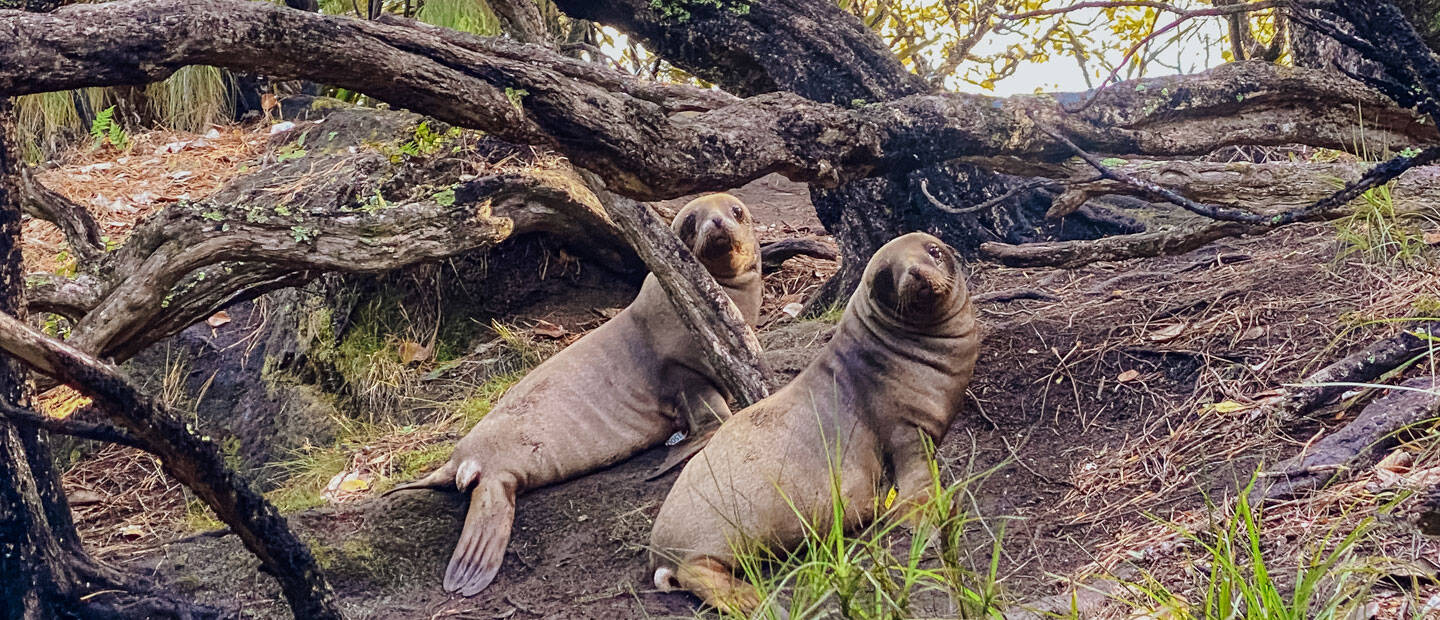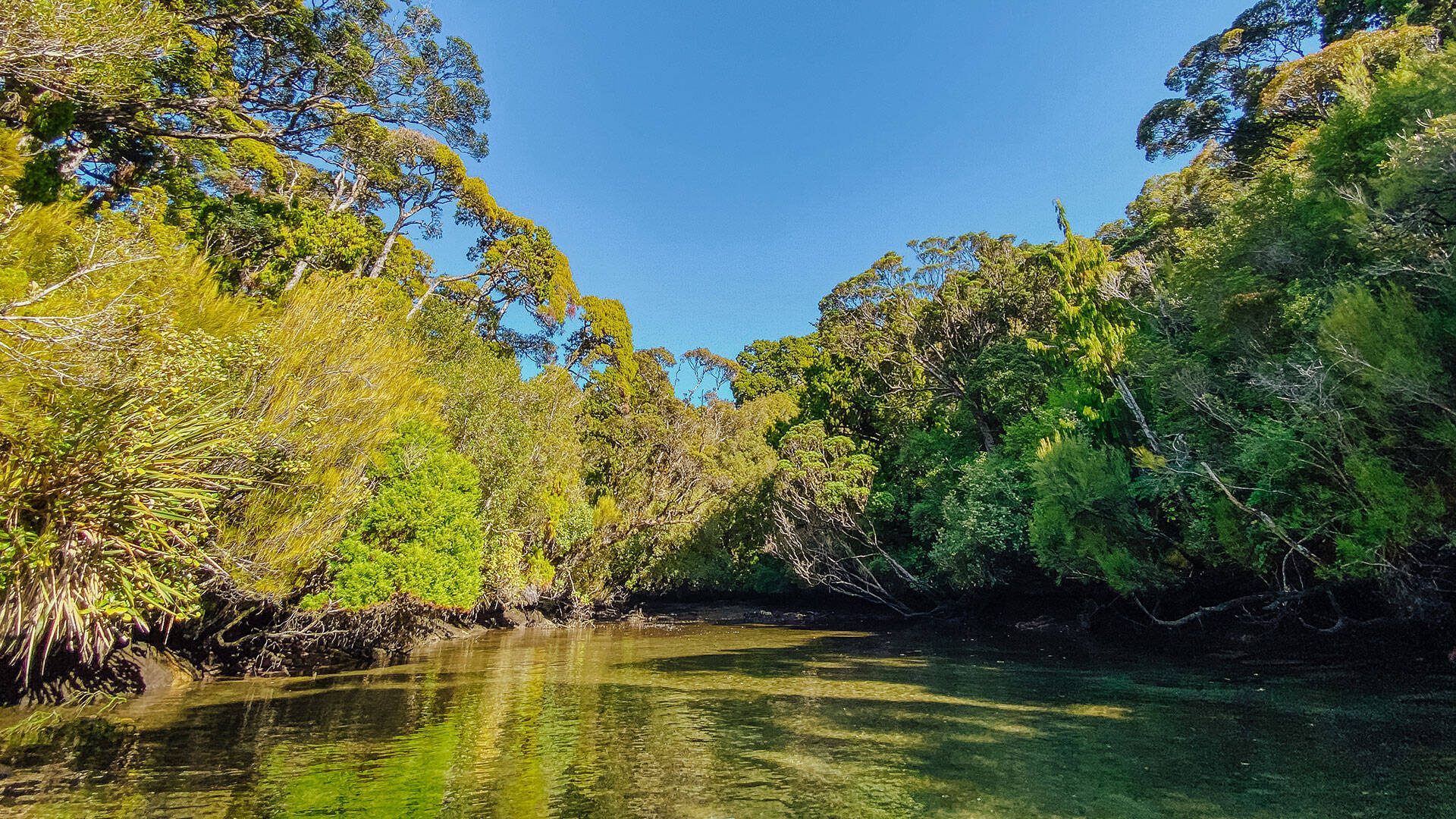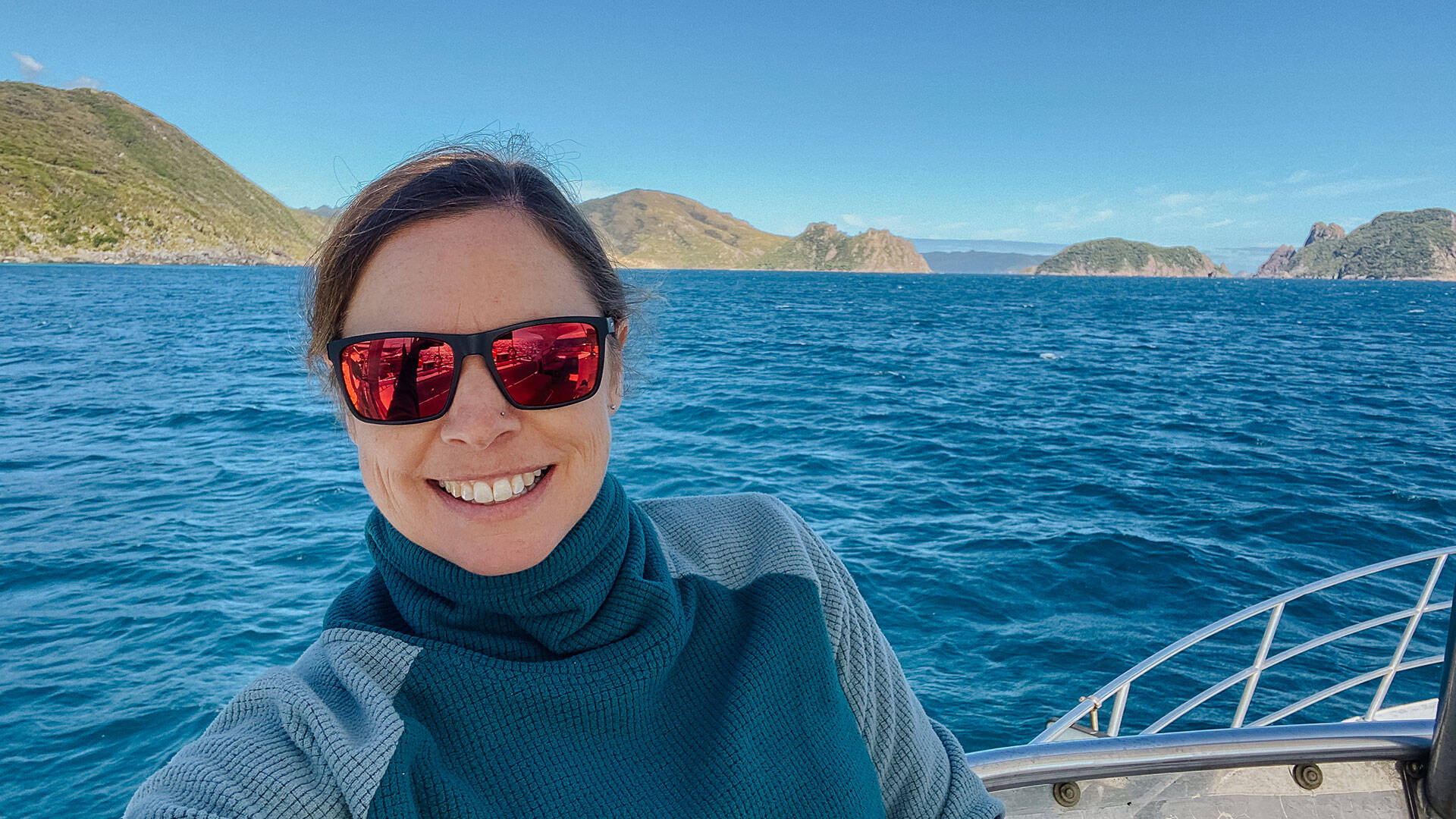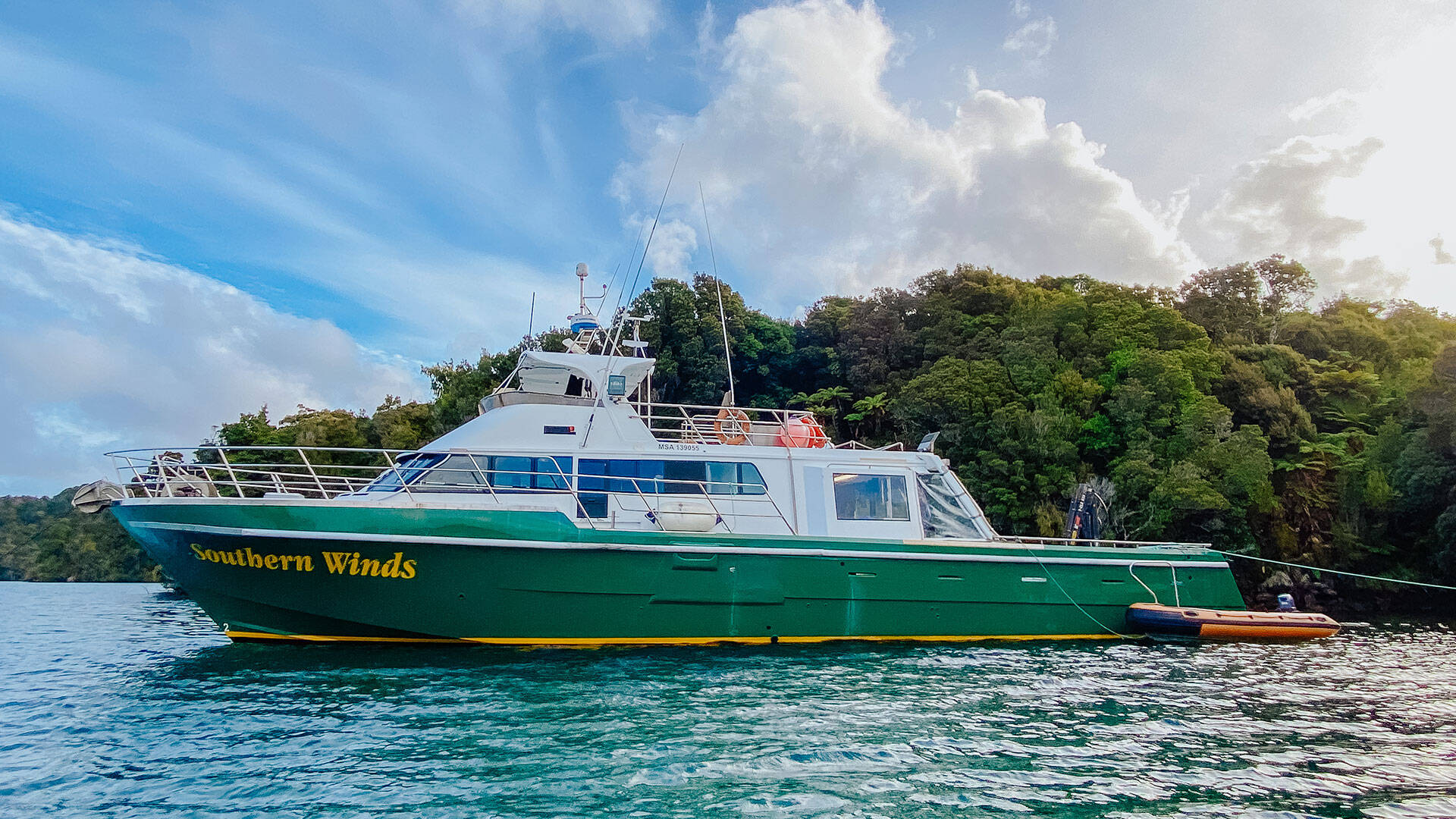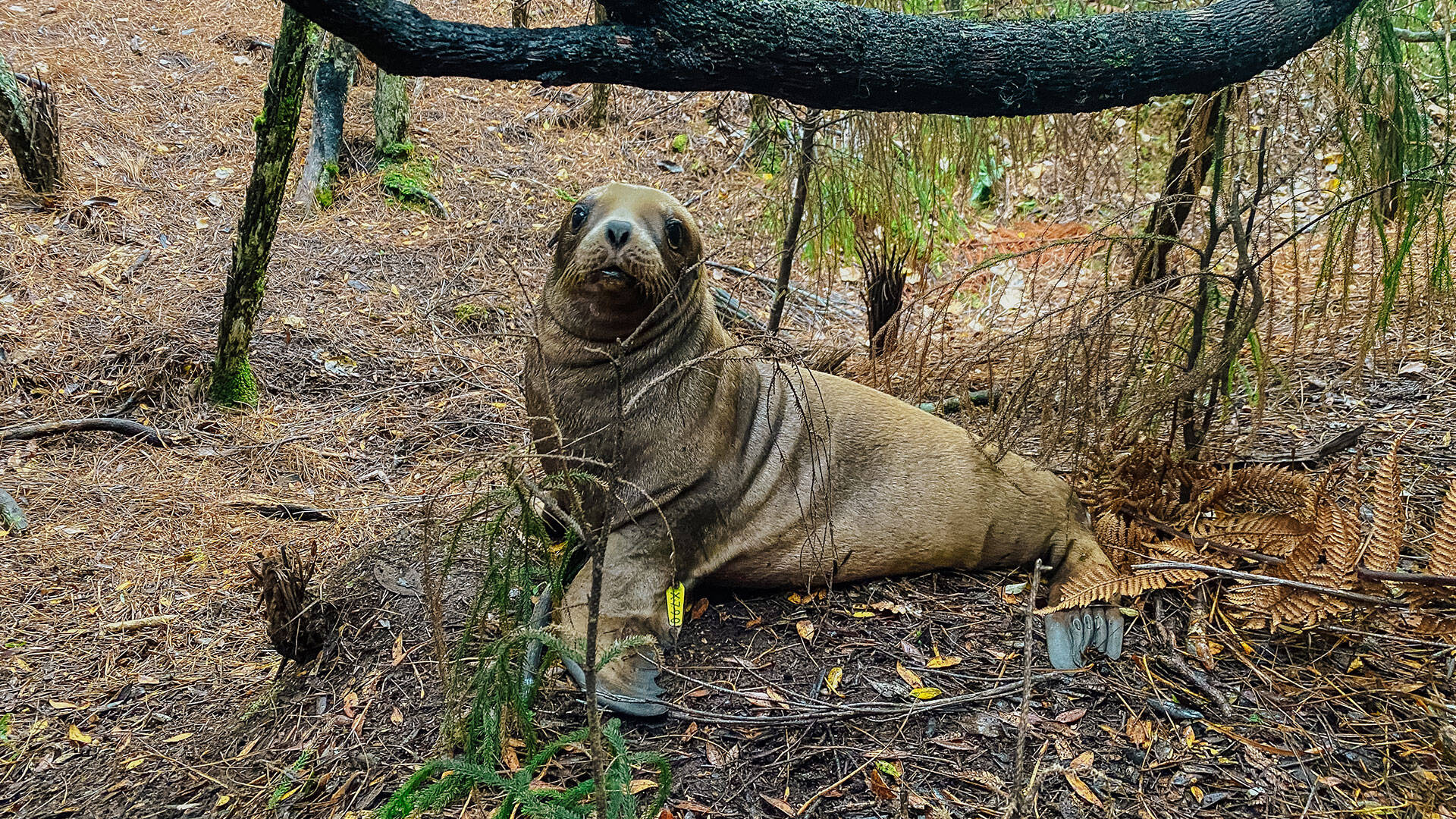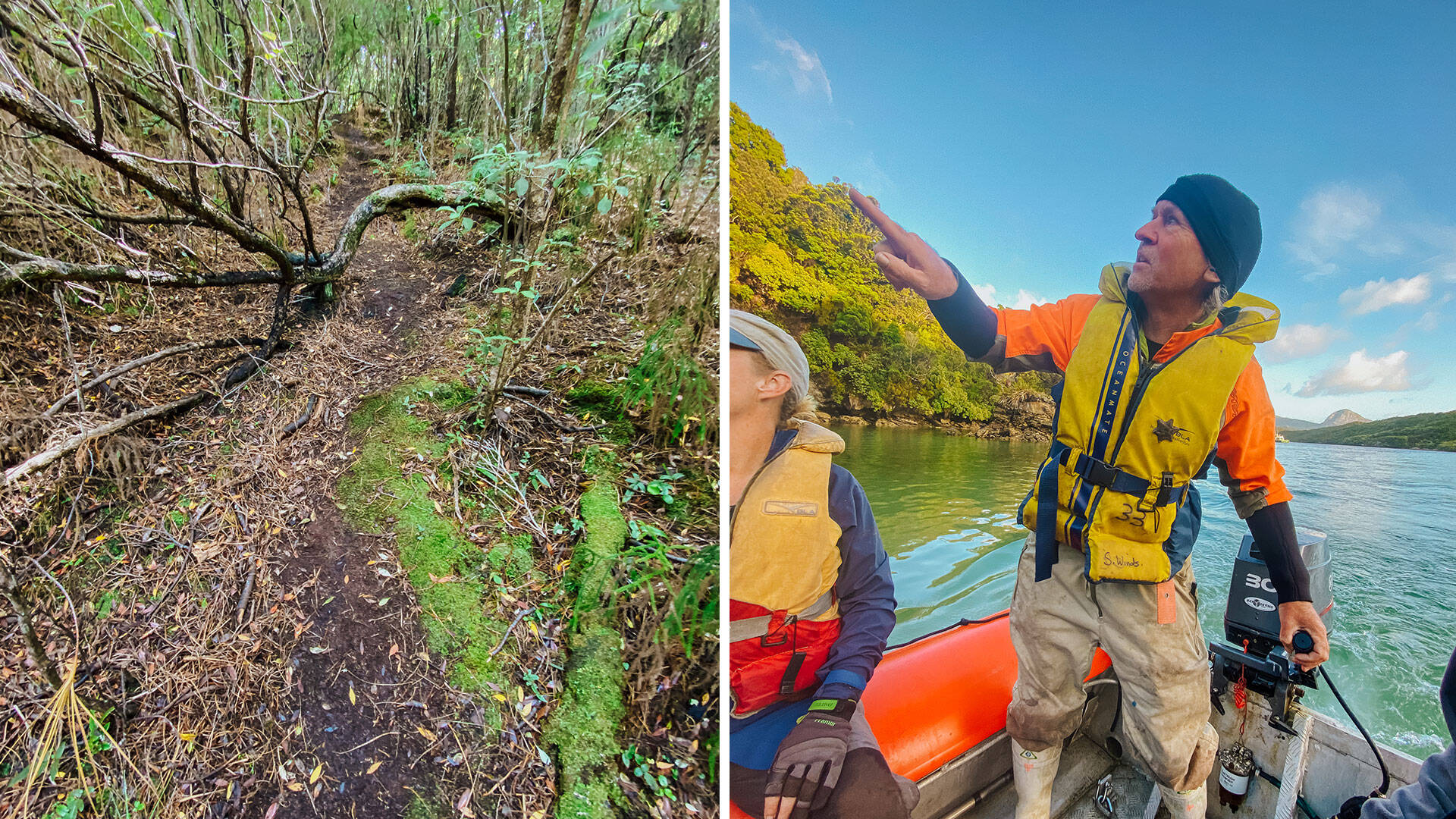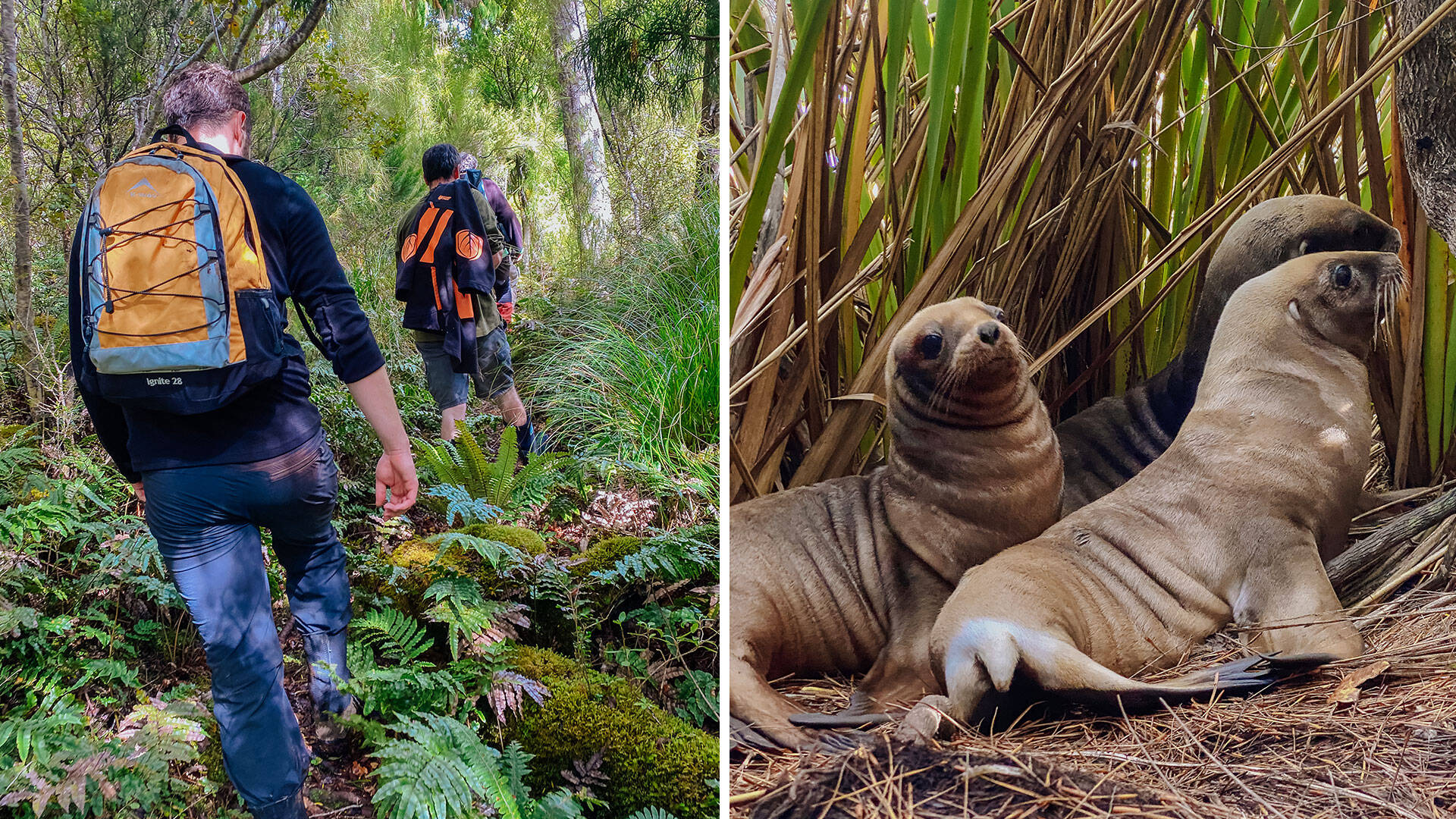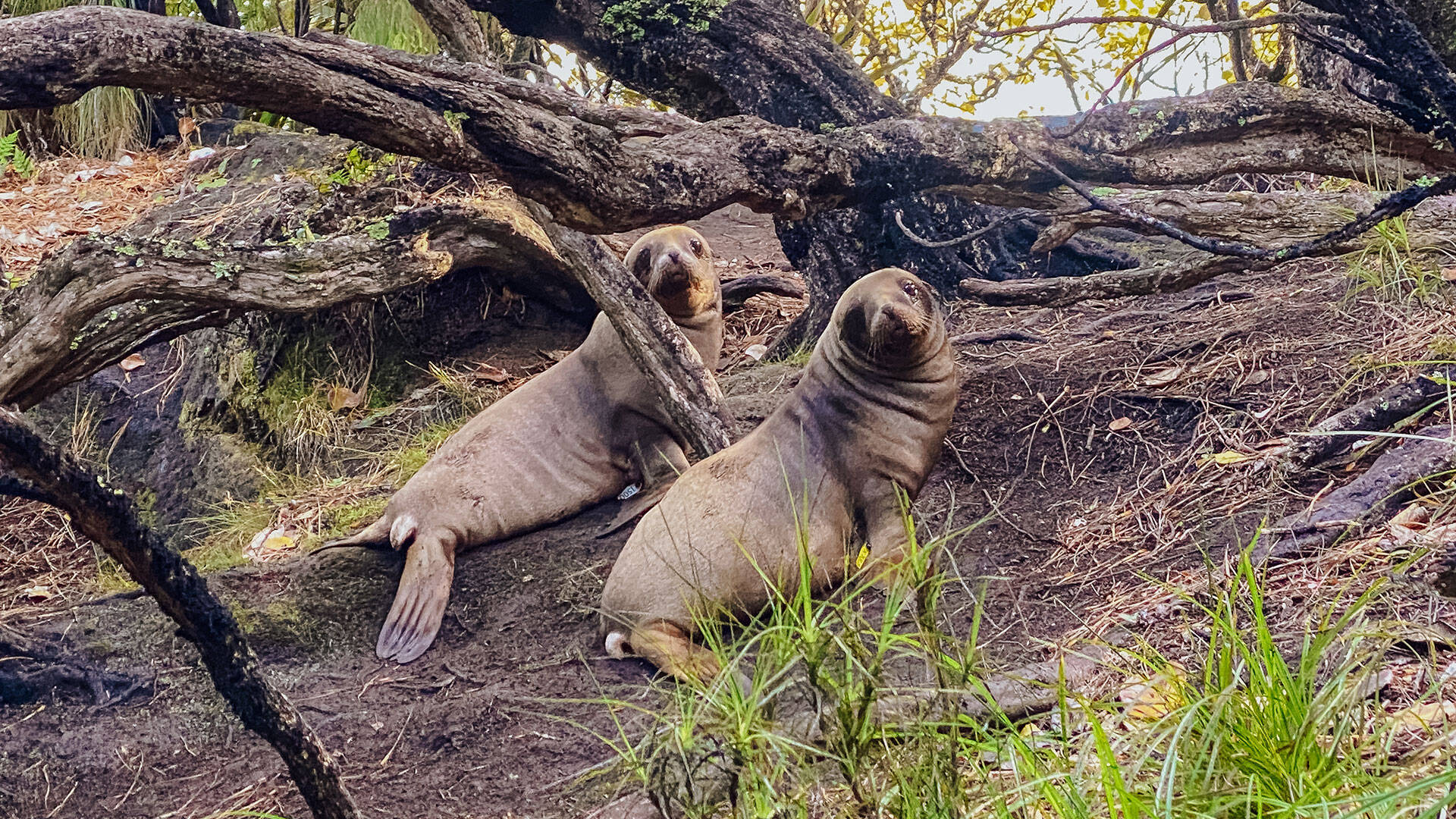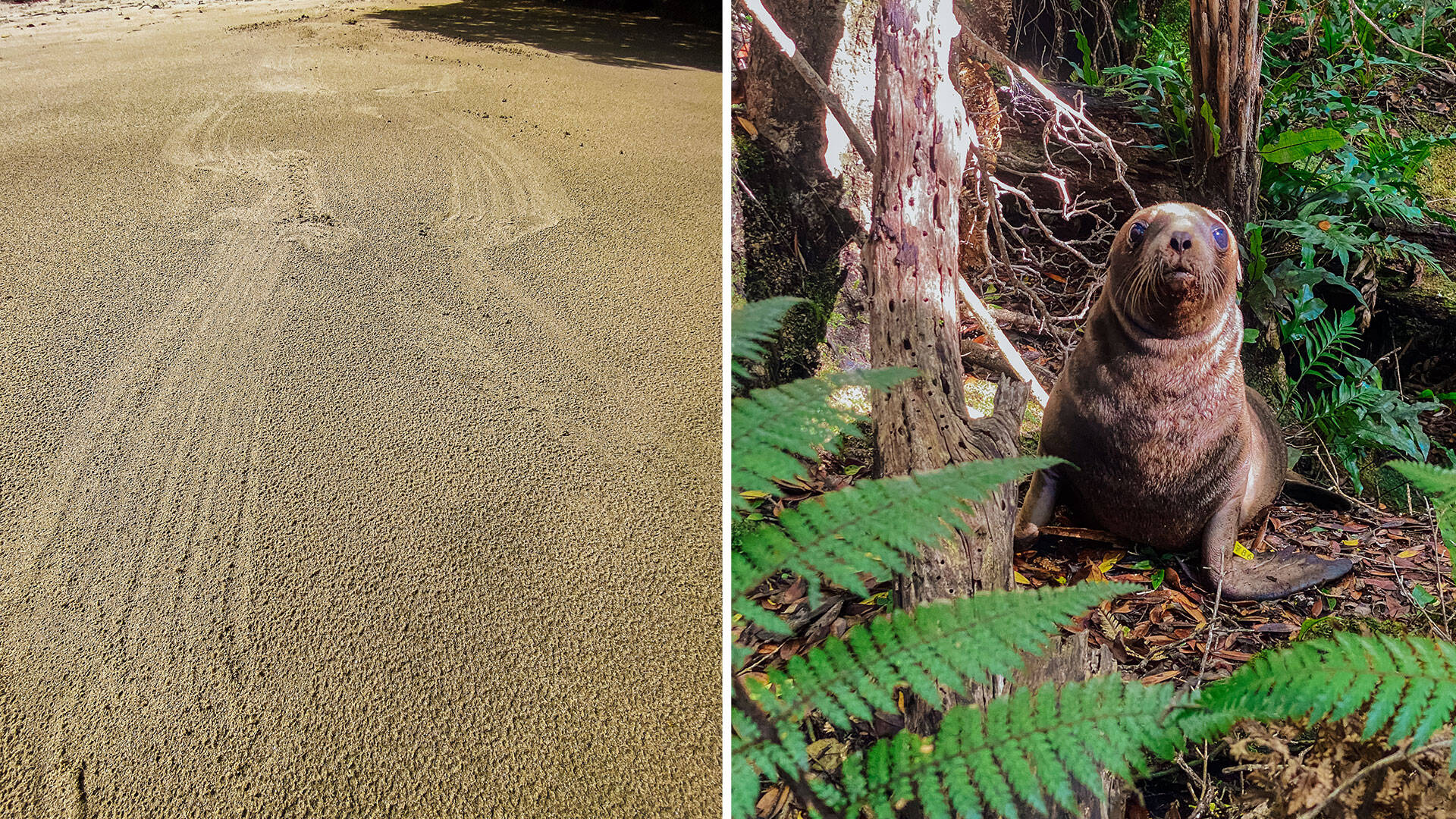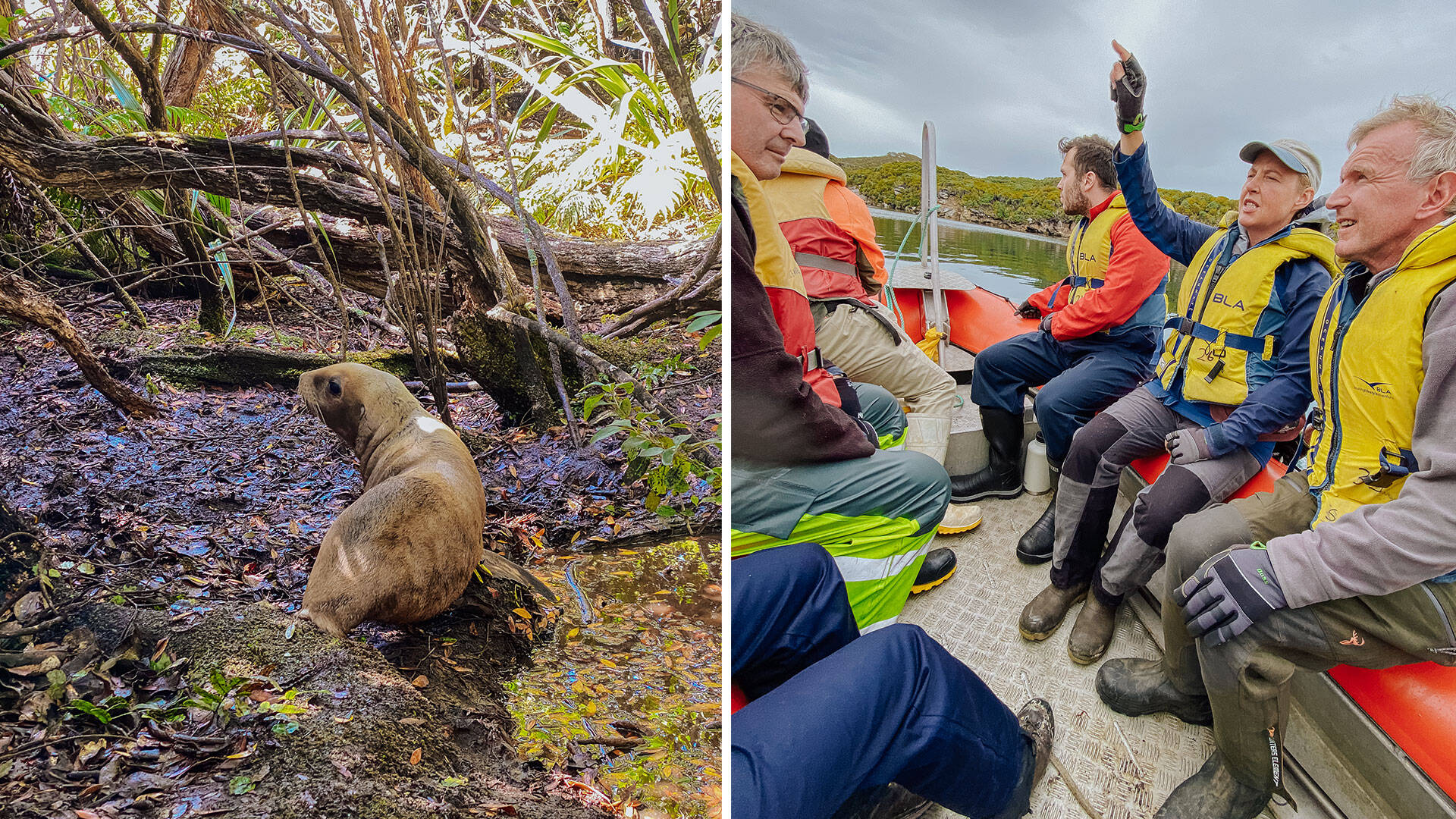In March each year, the Department of Conservation sends a team of experts to Port Pegasus on Stewart Island for the annual pup tagging and population survey. These surveys are crucial in collecting data to understand how this population is surviving. This ongoing data collection includes their movement patterns, reproductive rate, and survival to safeguard the colony's future.
Our veterinary clinical coordinator Mikaylie joined the team of nine for ten days to help with the survey. Her previous experience with working around adult sea lions from volunteering with DOC provided a necessary skill set for the project.
Pakake are one of the rarest sea lion species in the world and are endemic to New Zealand; they are classified as endangered, with around 12,000 alive today. Since the 1990s, breeding females have been returning to Steward Island around Port Pegasus in the southeast corner of Rakiura, where the Department of Conservation (DOC) have conducted annual searches and pup tagging since 2011.
During the survey, the team travels by boat to different coastline areas, searching for signs of pakake pups in the form of slips and tracks on the shorelines. Many areas are dense bush-covered vegetation with rugged shore banks that require the team to climb up and over the terrain.
The team will break into smaller groups – with each person having a dedicated role. Mikaylie was given the role of ‘tail catcher’, which requires her to carefully catch and hold the pup for the team to tag both front flippers, determine their sex and then release them back on the beach.
“It's not a walk in the park, it's physically demanding work, you have to be fit and focused.
You know you are close when you smell a fishy odour, and once you have spotted a pup, the whole team must move quickly. We want it to be as stress-free as possible, so the quicker we can be, the better.”
“It's an incredible feeling, being so far from civilisation; you’re truly in the wild and working so close with these animals are a thrilling experience. Knowing this survey information plays a crucial part for their future, is rewarding work, “explains Mikaylie.
The team were able to tag 57 pups in Port Pegasus (26 female: 31 male) which was a decrease on last year’s total of 62, but it’s still an encouraging number as it remains at a number higher than 35 for the last 5 years still qualifying Stewart Island/Rakiura as an important breeding colony as this is the first recognised colony located outside of the Sub-Antarctic islands for over 200 years. (see graph below)
How you can help:
- Donate to Auckland Zoo’s Wild Work (So we can keep doing this important conservation work!)
- Learn more from our friends at the Department of Conservation (DOC) about Aotearoa’s sea lions
- Learn from DOC about their main threats
- Learn how you can take action


